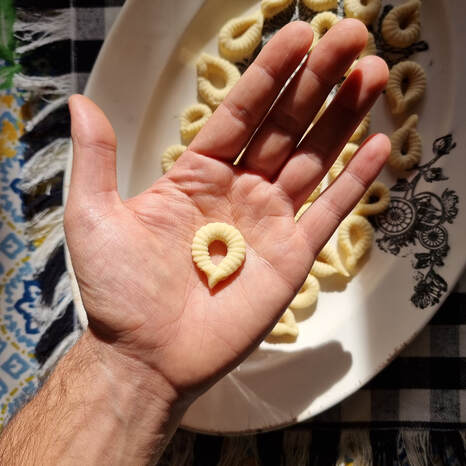|
You might not have seen this rare pasta shape before. It's called spizzulus and it's a traditional fresh pasta from Orroli in Sardinia, a very small town in the south of the island. The name comes from our dialect and it literally means "to pinch" referring to the pinching method used to seal the ropes of dough together into a loop. Although most Sardinian pasta shapes are very unusual and a bit tricky to make by hand, these ones are very easy and are great to accompany with whichever sauce you wish. Because of the way they are shaped, the pasta stays thick giving the final dish a good bite. We used a classic semolina and water pasta dough here but in Orroli there is also a different dough version made with Cannonau, a delicious red wine from Sardinia, instead of the usual water. Serves: 2-3
Ingredients
Method
We like to serve them with another Sardinian speciality - sheep ragù and you can find the recipe here. Alternatively they are also great with pesto - you can find our pesto sauce recipe here.
0 Comments
Leave a Reply. |
